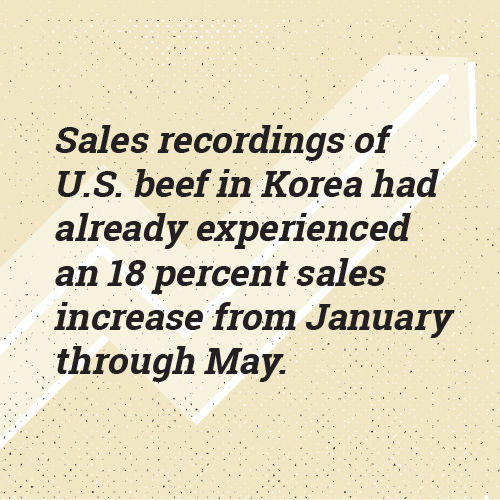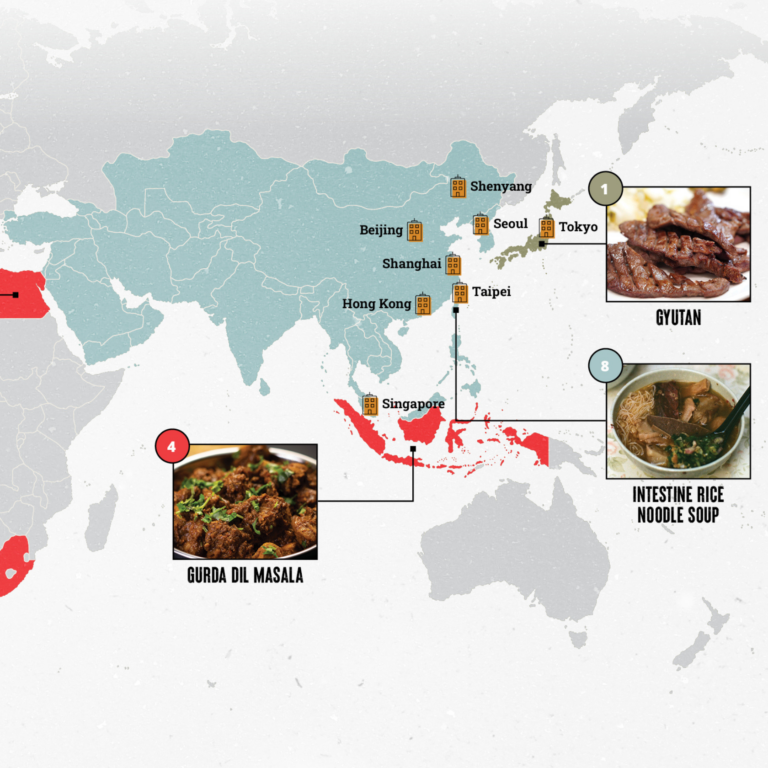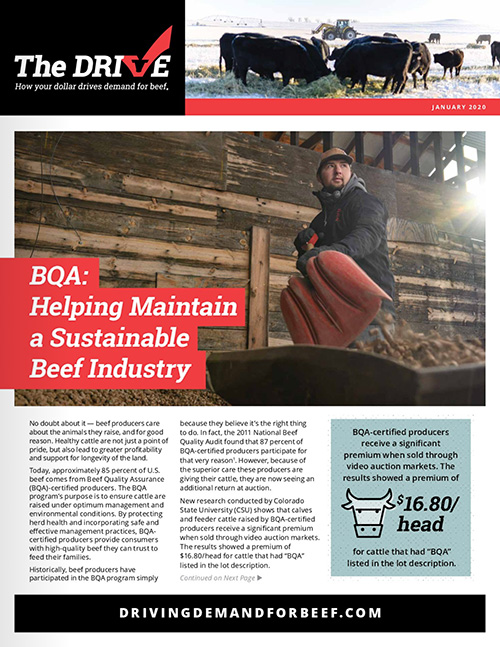Ten Ways USMEF is Promoting U.S. Beef Around the World
The U.S. Meat Export Federation (USMEF), a subcontractor to the Beef Checkoff, strives to maximize market access, grow demand and increase U.S. beef value across the world. Due to the coronavirus pandemic, many of USMEF offices had to adapt their initial tactics and strategies to fit the new international marketplace. Despite the coronavirus situation, USMEF is continuing to encourage beef sales in key export markets and emphasize U.S. beef integrity.
Here are just a few of their recent efforts:
1. American Beef Fair Promotions in Japan
Retail promotions for U.S. beef in Japan were extremely popular over the summer. The “American Beef Fair” promotions, which featured various cuts of U.S. beef, took place at six retail chains. More than 400 outlets participated in the regional promotion, which included newspaper advertising and tasting demonstrations.
2. “U.S. Meat Connect” App in Mexico
With many businesses closing or reducing their operations, it has been difficult for distributors, restaurants, retailers and consumers to know what products are available. To help buyers and consumers in Mexico find and purchase U.S. beef, USMEF developed an app that facilitates the process. The “U.S. Meat Connect” app has been promoted on social media and YouTube, with influencers also encouraging consumers to download and use it.
3. Instagram Live Cooking Demos in the Middle East
USMEF recruited one of the region’s top social media culinary personalities, Chef Maroun Chedid, to perform live U.S. beef cooking demonstrations on Instagram in June. The live broadcasts highlighted the attributes of U.S. beef to Chef Chedid’s broad online audience of 265,000. Chef Chedid starred on Top Chef Middle East and owns the Maroun Chedid Cooking Academy in Lebanon. During his Instagram Live, he explained the quality and advantages of U.S. beef cuts such as tenderloin, chuck and brisket. He also shared his experiences cooking with alternative cuts of U.S. beef, emphasizing how their quality and versatility can potentially enhance profits in the region’s growing foodservice sector.
 4. Product Samplings in South Korea
4. Product Samplings in South Korea
Product samplings for U.S. beef gained traction in June in and around Seoul. Seven retail chains with 76 outlets conducted in-store promotions with product samplings for U.S. beef. Sales recordings of U.S. beef in Korea had already experienced an 18 percent sales increase from January to through May.
5. Steakhouse Program in Peru
Two steakhouses with 12 outlets featured U.S. beef for Father’s Day in and around Lima. USMEF provided take-out and delivery program support as both steakhouse chains were attempting to restart their restaurant operations after being shut down by the pandemic.
6. Training for E-Commerce Companies in China
To raise the profile of U.S. beef and increase how often it is shared and recommended online, USMEF conducted on-site staff training for two popular e-commerce companies in Shanghai. USMEF highlighted a variety of U.S. beef cuts, offered a host of cooking applications, storage tips and defrosting techniques. The training also illustrated the difference between grass-fed beef and grain-fed beef and emphasized the advantages of U.S. beef over competitor products.
7. Beef Promotions in Bulgaria
Portion-controlled cuts of U.S. beef were promoted in 29 Metro outlets in Bulgaria. Metro is one of the largest hypermarket chains in Europe. From January to June 2020, more than six metric tons of U.S. beef has been exported to the European Union.
8. Delivery Support Program in the Philippines
USMEF hosted a promotion for U.S. beef in June with a target account distributor in Manila. This delivery fee support program contributed toward the delivery fee for consumers who purchased any combination of U.S. red meat products.
9. “Go U.S. Beef” in Taiwan
U.S. beef “On the Go” was a five-week retail promotion for U.S. beef in May. This was part of the “Go U.S. Beef” campaign, which took place at Keeper’s outlet, a retail location, as well as their online platform. Tasting events with U.S. beef were also held on mobile carts at six different neighborhood locations during the promotional period. Events featuring interactive tools encouraged additional engagement on social media.
10. “Bringing Hope” Kits in the Dominican Republic
USMEF worked to provide direct support to foodservice workers with “Bringing Hope” kits. Many foodservice workers were without work when restaurants shut down during the pandemic. These care packages included U.S. beef, rice, pasta, vegetable oil, salt, sugar, butter, cheese and bread. A total of 300 “Bringing Hope” kits were distributed to employees of 51 restaurants and six hotels in Santo Domingo during May and June.
Even with the coronavirus situation varying from country to country, USMEF reports show a sustained demand for U.S. beef despite the economic slowdowns. Markets around the world have a strong desire to purchase U.S. beef cuts and variety meats. Exporting these products helps boost demand for cattle and, ultimately, cattle prices. The Beef Checkoff will continue to support these efforts and increase demand for U.S. beef in international markets.
The Beef Checkoff program was established as part of the 1985 Farm Bill. The checkoff assesses $1 per head on the sale of live domestic and imported cattle, in addition to a comparable assessment on imported beef and beef products. States may retain up to 50 cents on the dollar and forward the other 50 cents per head to the Cattlemen’s Beef Promotion and Research Board, which administers the national checkoff program, subject to USDA approval.


















